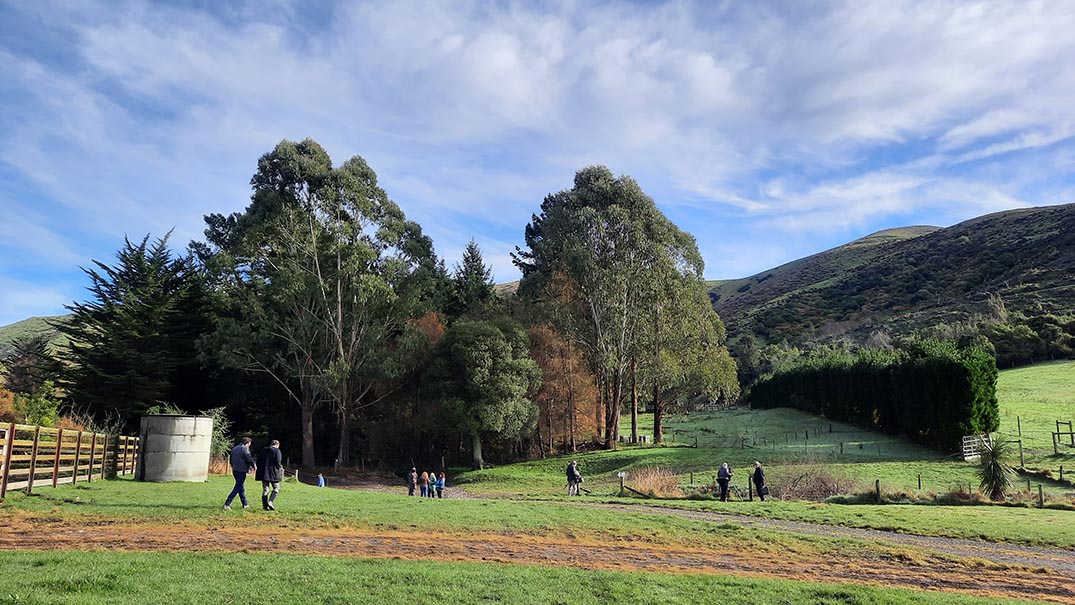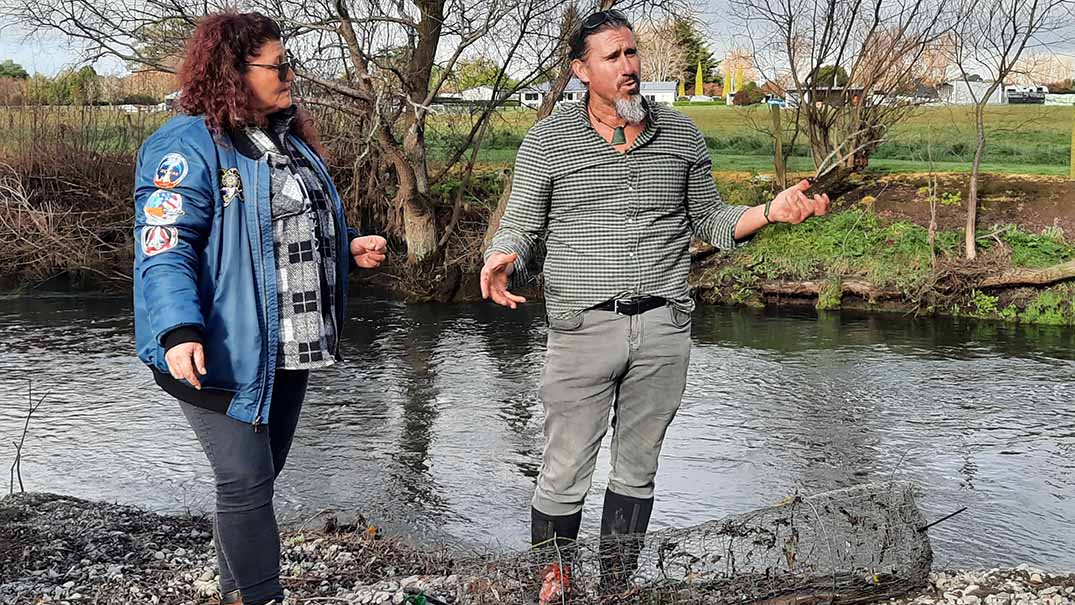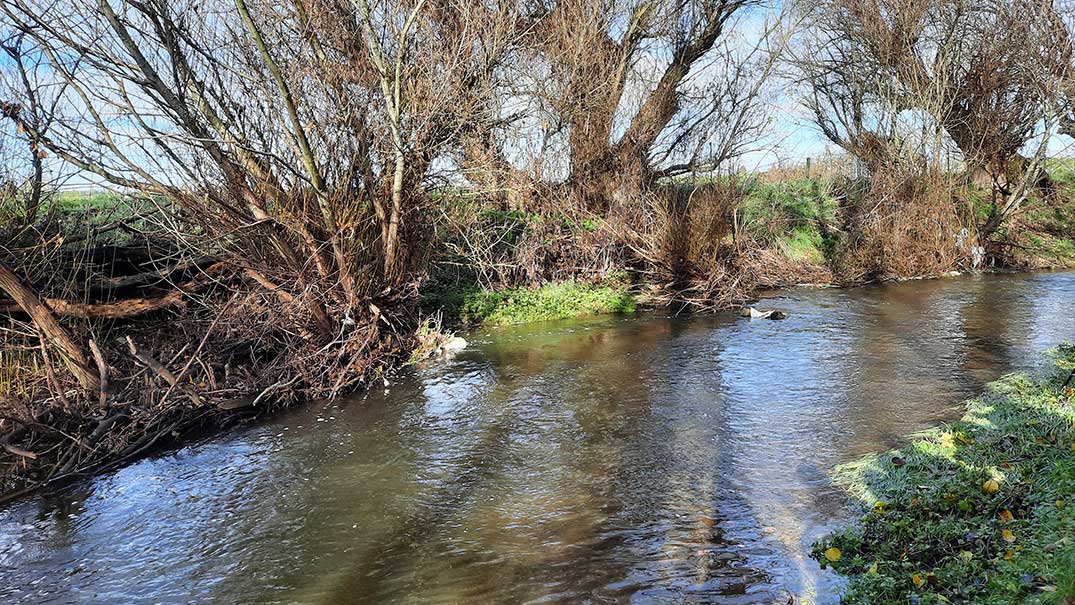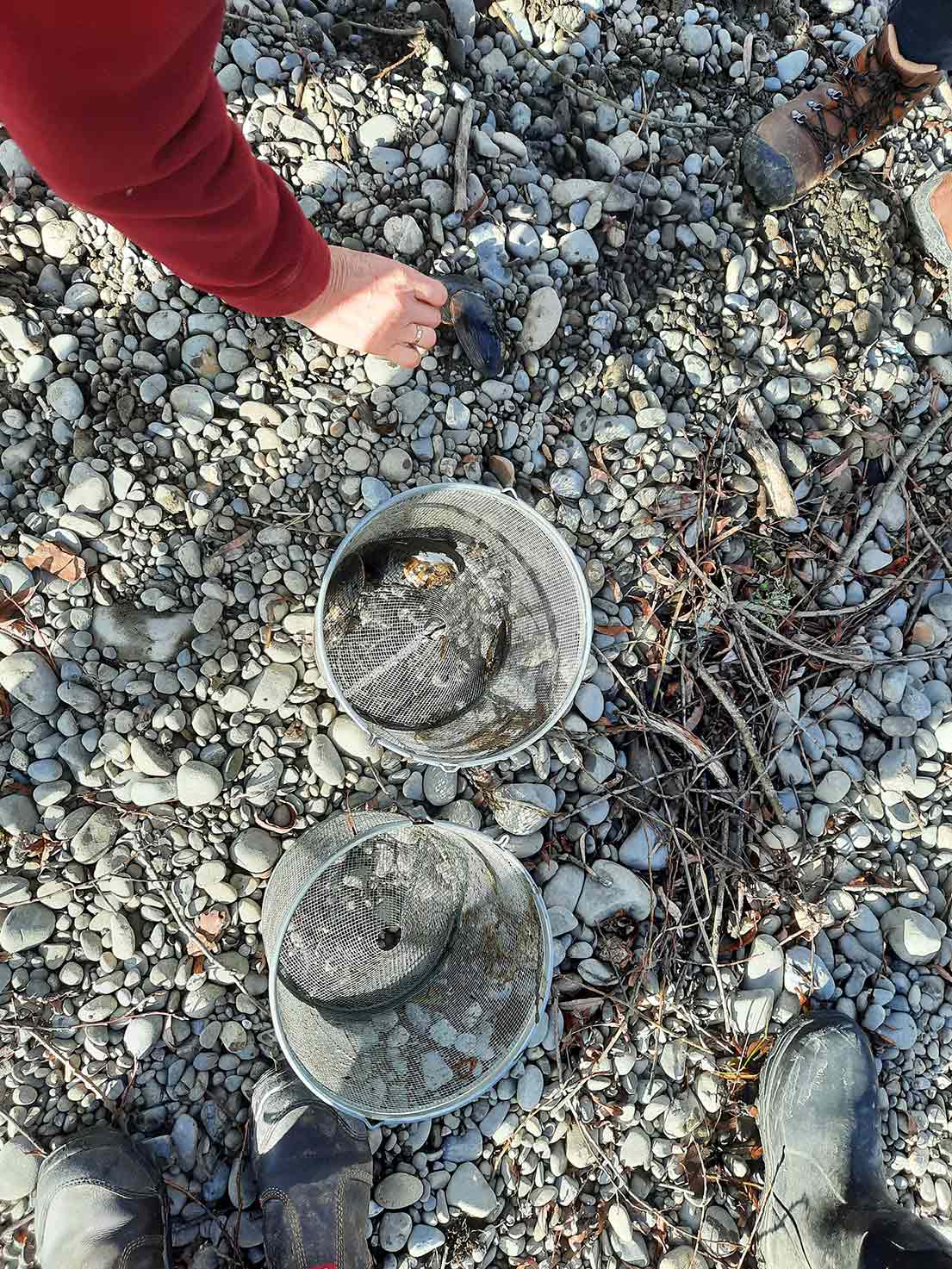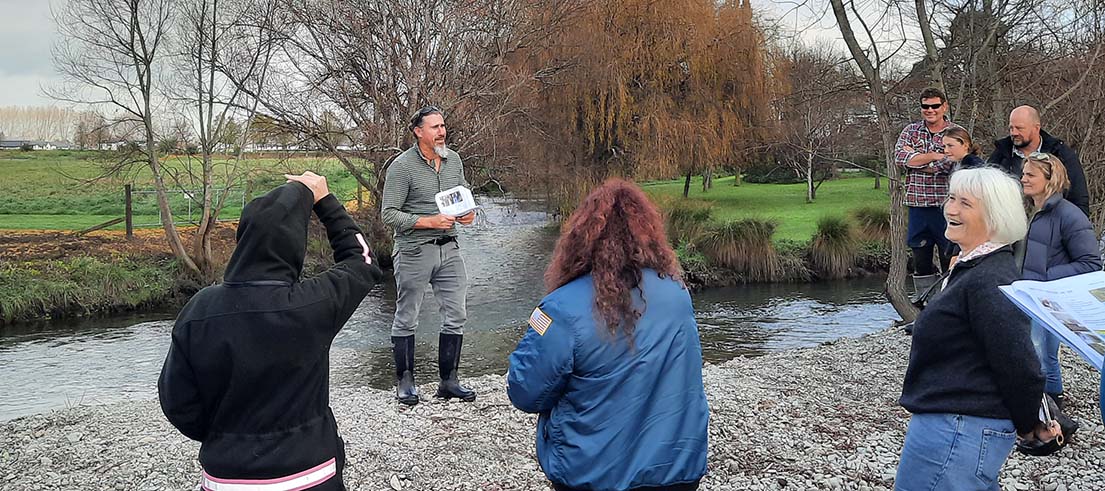
Cust catchment seen through a Mātauraka Mahinga kai lens
A mahinga kai field trip recently held at three different locations along the Cust catchment/rohe in Waimakariri highlighted the importance of our natural resources.
The event, which was held in late June in collaboration with the Waimakariri Landcare Trust, had participants visit a farm at the top of the catchment, a lifestyle property in the middle and the Three Streams Confluence at the lower end just as the Cust River enters the Kaiapoi. The trip followed a ki uta ki ta (mountains to the sea) format, by starting at the top of the catchment and working down to the confluence and helped demonstrate how interconnected our natural resources are.
First catchment stop – The Grange
It started at Alistair and Genna Bird’s beef and sheep farm, The Grange, on the foothills between Oxford and Ashley Gorge and at the top of the Cust catchment. While at their property, those in attendance were given a rundown on the farm and related ventures the pair run, as well as the environmental changes they have made to enhance the farm.
The couple have fenced off all waterways on the flat part of the property from stock and installed culverts across the main water crossing. They plan to further offset greenhouse gas emissions by registering large areas of regenerating native bush with the Emissions Trading Scheme. Farm reviews are also undertaken every six months to ensure plans are on track.
Mahinga/mahika kai
The couple also share their property with numerous recreational walkers and horse riders, some of whom stay at The Grange in a hill house located in the back hill area with great views over the plains. The Birds also recently swept up a number of accolades at this year's Balance Farm Environment Awards.
Northern pou matai ko Makarini Rupene facilitated the day’s event, starting with welcoming everyone to the Bird’s farm. He started with his pepeha (Māori introduction) that includes his relationship to the local mountain, rivers, land and ocean, before talking about how land-use activities can affect more than just one property. This is because all of these parts of the landscape are interconnected.
He also introduced mātauranga pūtaiao senior advisor Channell Thoms and together they talked about the importance of mahinga/mahika kai – which is the traditional value and practices of our resources (sometimes food resources), and ecosystems – and particularly, its use in the Waimakariri district.
They talked about how mahinga kai is about living and connecting in this world.
"It’s about thriving and maintaining those things that sustain and nourish, and that bring wellbeing – clean water, clean air, clean soil, and sufficient shelter. It includes access to clean and healthy kai, and doing this in a sustainable way, considering future generations," Makarini said.
Second catchment stop – the pathway
The field trip then moved to Marilyne Pasco’s lifestyle block located about midway down the catchment close to Springbank. Here the Cust River is running along her southern boundary.
The group spent some time sharing in conversation and kai/food before following Marilyne down to the Cust River as it runs along her property. She fed her friendly tuna/eels while discussions about mahinga kai and the importance of keeping our waterways clean continued.
Channell shared some mātauranga Māori knowledge which included information about traditions, values, concepts, philosophies, and world views. She also talked about what mana whenua look for at sites when evaluating them as part of monitoring for mātauranga purposes.
Where the Cust River flows along Marilyne’s property, it is part of the kauhanga/corridor which helps lead from the top of the catchment (ki uta) to the sink (ki tai) of the Cust River. Just like at the Bird’s farm, the Cust River at Marilyne’s property holds important mahinga kai values, and activities in this middle part of the catchment can impact what happens downstream.
"If it doesn’t have enough wai/water, this affects fish passage, or if the quality of the water is poor, then we’re likely to have fewer key insect species that fish feed on, which then affects the functioning of the whole ecosystem," Makarini said.
"When at Marilyne’s property, we saw plastic film waste bound up in trees. This was likely rubbish from further upstream which has been swept away downstream in flood flows. Importantly, this demonstrates that not disposing of your waste properly can impact on your neighbours or those further down the catchment," he added.
Final stop – joining of awa/rivers
The tour then concluded at the bottom of the Cust catchment, at the confluence where three different rivers, including the Cust, join up to form the Kaiapoi River. This was a key stop as it showed where traditionally more of the mahinga kai species were harvested from and how they’re still present, although more limited, today.
Makarini and Channell talked about and showed some of the key species that remain.
"These species, like tuna/eels and freshwater mussels/kākahi have been really important mahinga kai sources in the past and we hope they will also be in the future," Makarini said.
He said the event provided a good opportunity to connect with industry groups, landowners, and farmers, providing education about taonga species.
"We talked about the importance of these species and how they interconnect with our way of mahinga kai. It’s important for farmers and urban residents alike to understand mahinga kai, and what that is, so even though they use land differently, they all can help mitigate any potential impacts from stormwater or other runoff on mahinga kai," he said.
Field trip to be repeated in other zones
There are plans to repeat the event in other zones, to help spread the message.
"We are looking at holding a similar day in Kaikōura soon. We’re looking forward to talking to more people about mahinga kai and how best we can look after our taonga," Makarini said.
"The feedback we received immediately after the trip confirmed the event was highly successful for farmers, other landowners and interested community members - all valued gaining a more holistic understanding of the relationship Māori have with our environment. In particular, learning about the concept of ki uta ki tai, from the mountains to the sea, and that whatever land use activities we do, do impact (positively or negatively) on the rest of the catchment downstream," Makarini concluded.

